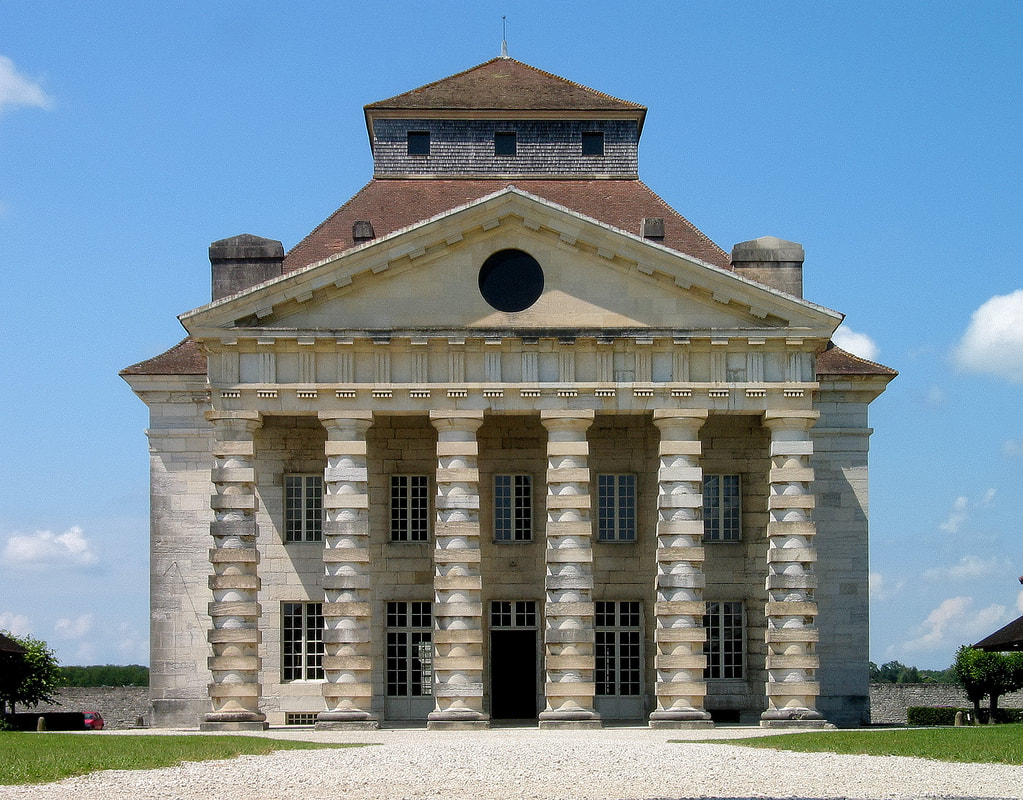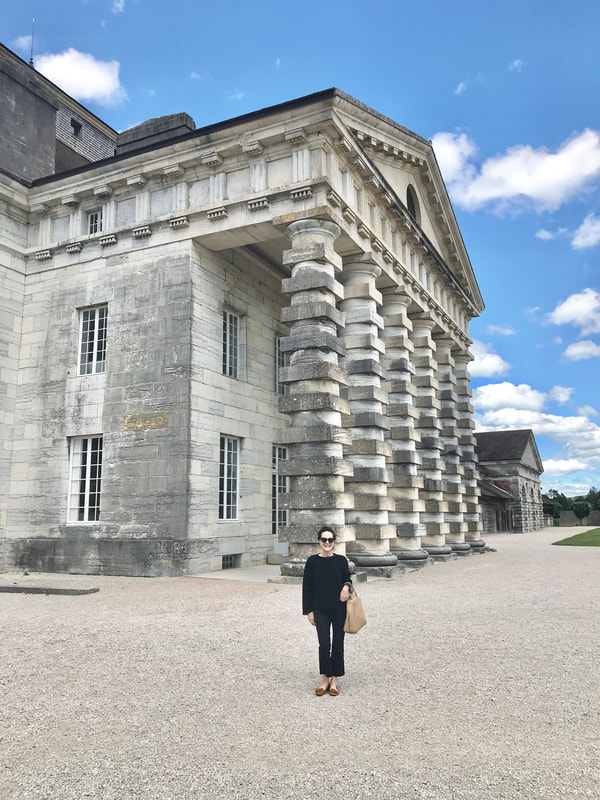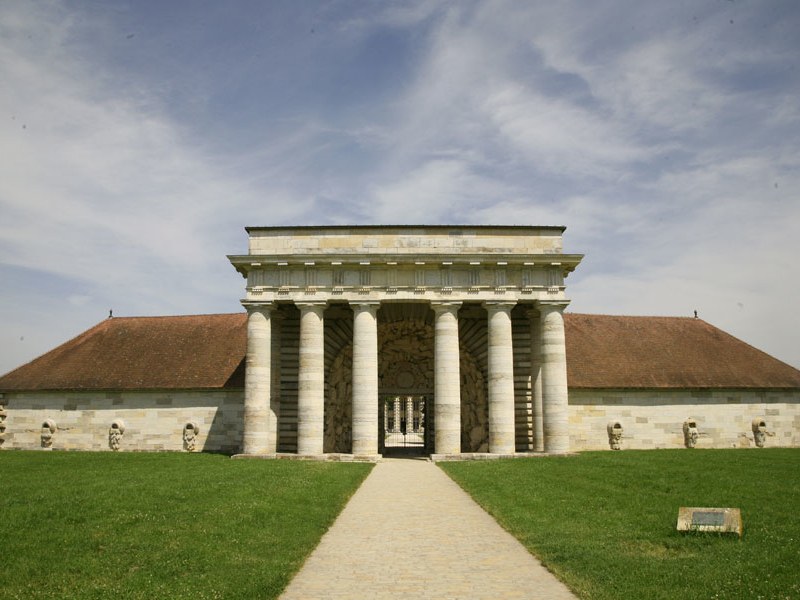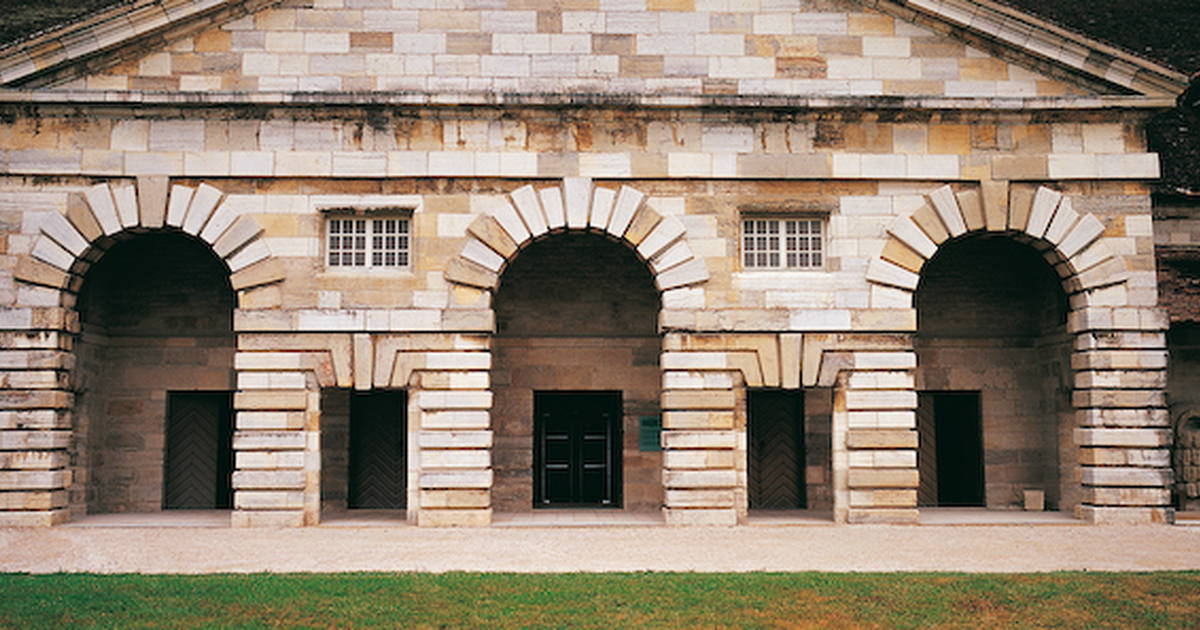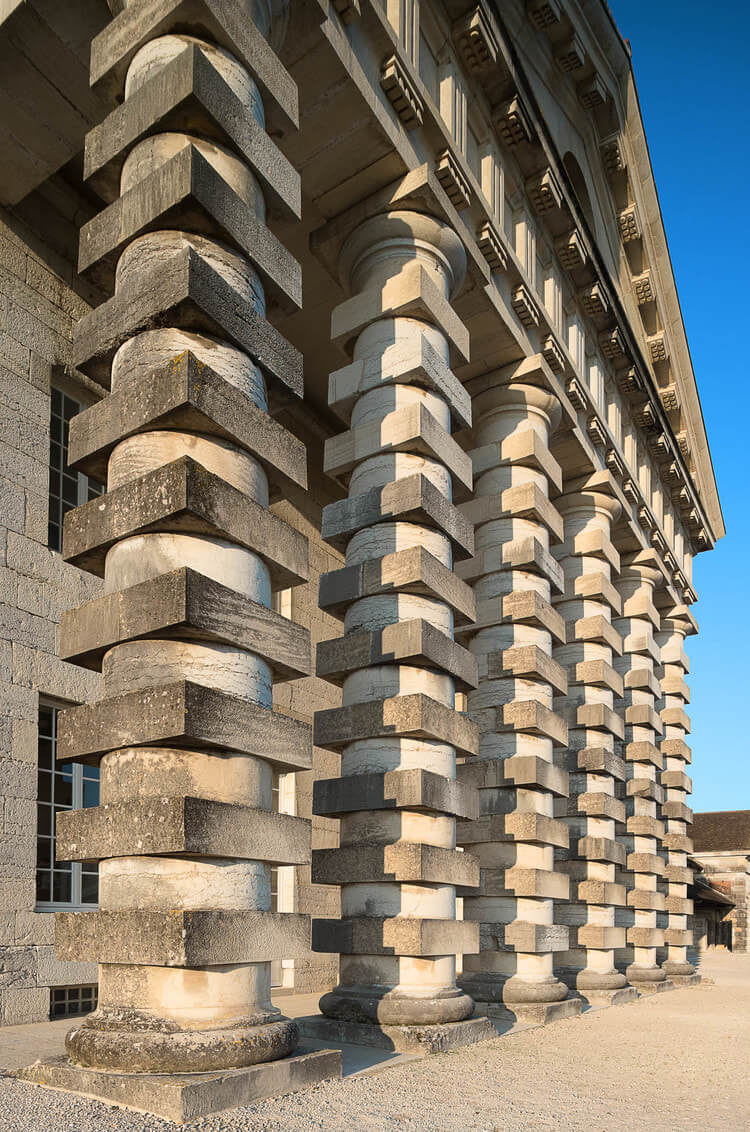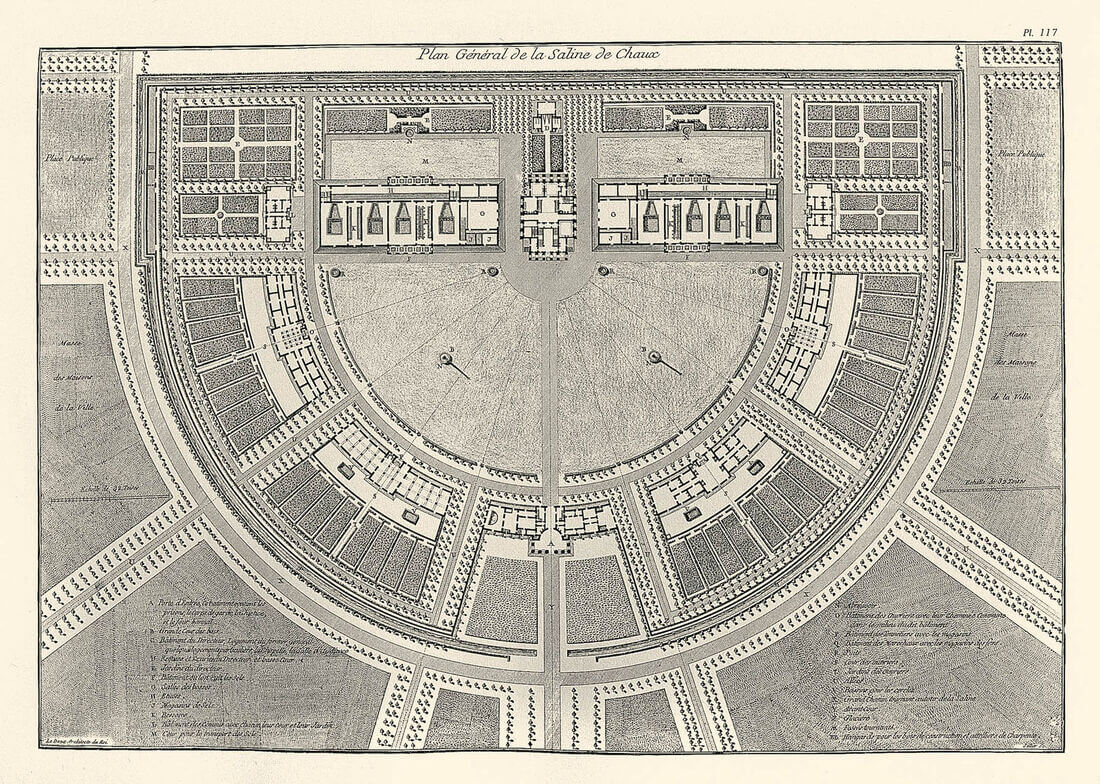Continuing the architecture pilgrimage in France, a short drive from Ronchamp, stands another ambitious and powerful masterpiece, a World Heritage Site by UNESCO. Not a building, but a factory town devoted to the production of salt, also known as the ‘White Gold,’ when salt was an essential and valuable commodity and a state monopoly. The Royal Saltworks of Arc-et-Senans, was active until technologies changed and was completely abandoned in 1918; today it is a tourist site, attracting architecture lovers.
It was built in the 1770s near the immense Chaux Forest that provided wood for fuel, necessary for the then complex process of producing salt. It was designed by the royal architect of the Age of Enlightenment, the brilliant Claude-Nicolas Ledoux (1736-1806), and was commissioned by Louis XV and Madame du Barry; it was completed just ten years before the French Revolution.
Ledoux realized Arc-et-Senans as an ideal, utopian industrial city, based on a geometrical plan of a semicircular, or an arc, around which eleven buildings were placed in hierarchical organization, with the Director house standing at its center.
Ledoux who was a fond of stripped-down and simplified neoclassicism, perceived this project as a way to manifest his urban planning vision, and the potential of architecture to elevate the soul of the people and put the work as their ultimate value.
